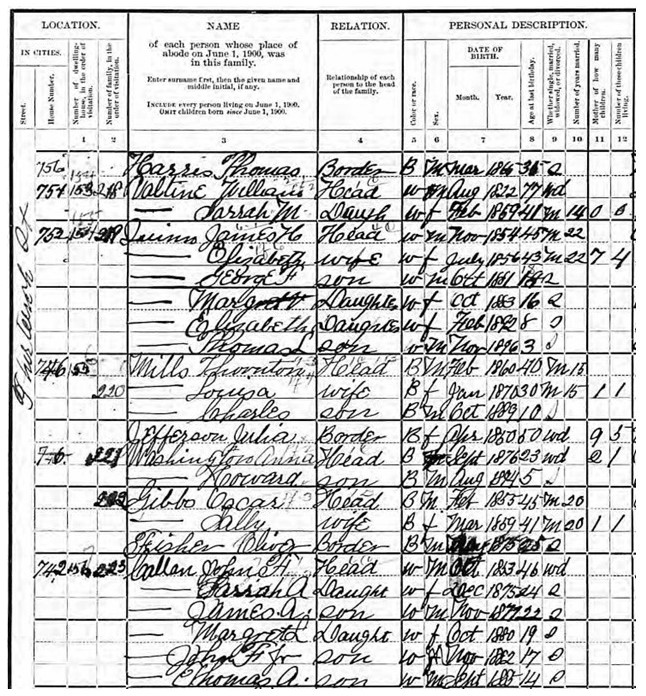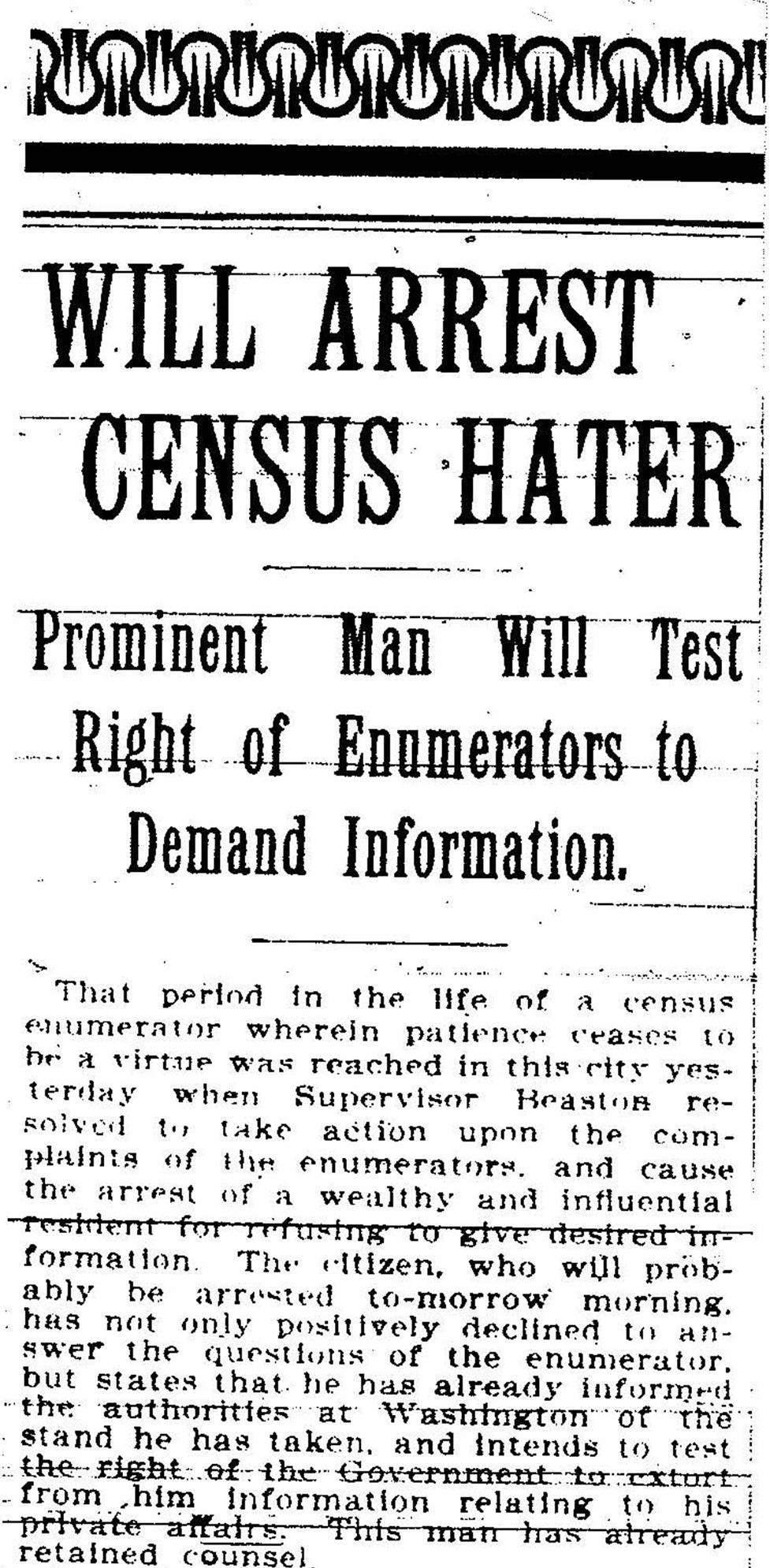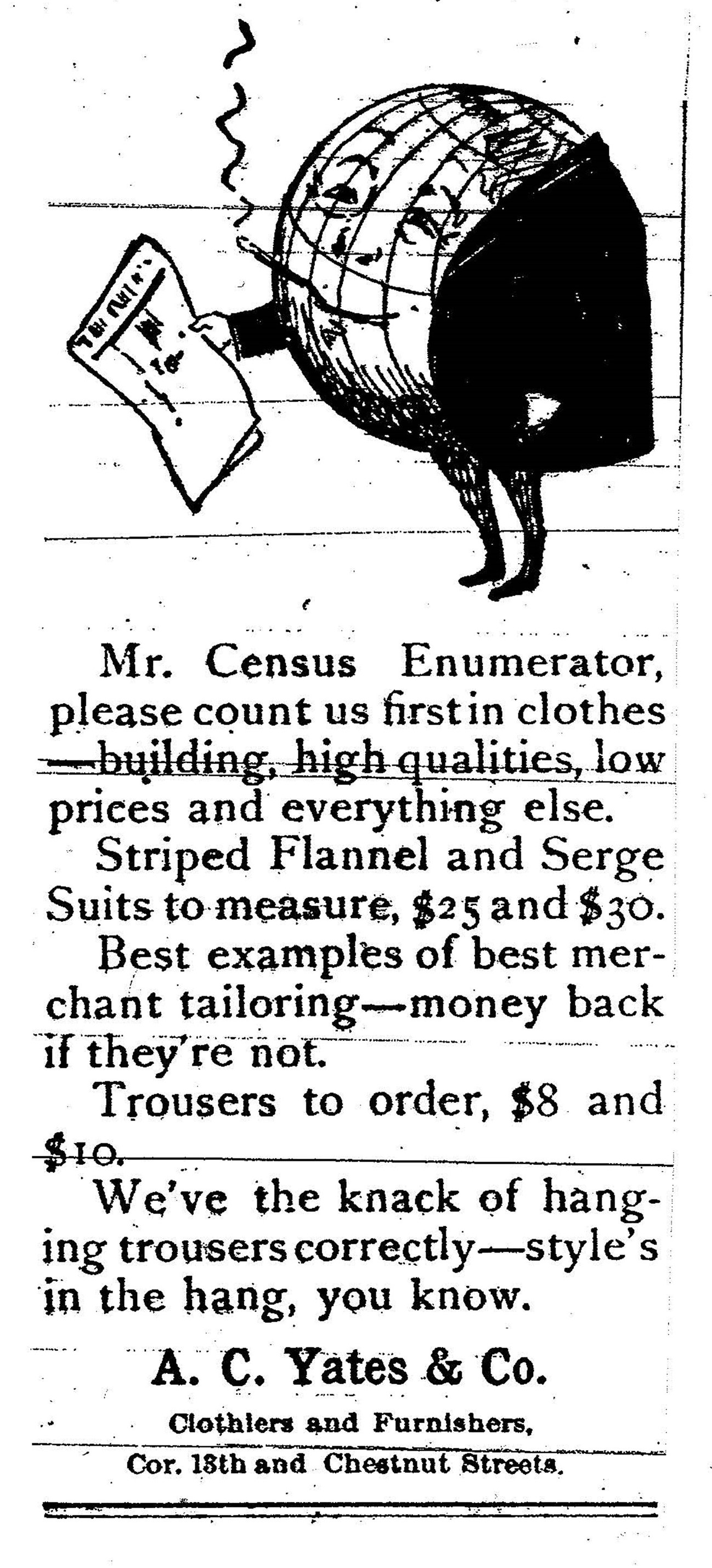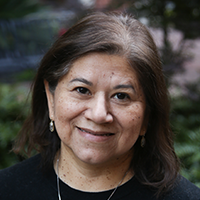Seventh Ward GIS Dashboard
The Seventh Ward GIS Dashboard, developed with librarians from Baylor University, is the most recent version of interactive web-based mapping, launched in February 2022. Instructions on using the dashboard can be found in this StoryMap
Making of Seventh Ward GIS

This image shows a small part of a census survey sheet. Note the street name and address is listed vertically on the left. Each row corresponds to one person, organized within households.
University of Pennsylvania Provost Charles Harrison sent a telegram to a young W.E.B. Du Bois on June 8, 1896 offering him a fellowship to conduct research in Philadelphia.
The Seventh Ward GIS is based primarily on 1900 U.S. Census data. Our team created the database by copying records for 27,000 people from hand-written records maintained on microfilm and Ancestry.com. We first copied the data into Microsoft Excel, then created an ACCESS database. developed with librarians from Baylor University, is the most recent version of interactive web-based mapping, launched in February 2022. Instructions on using the dashboard can be found in this StoryMap
We created a shapefile (ESRI-format map layer) by digitizing the 1895 Bromley fire insurance map, which was likely the map Du Bois used as a reference in The Philadelphia Negro. First, we cut the Bromley map into individual blocks, then georeferenced these pieces to the City of Philadelphia’s current impervious surface layer. Then we drew the parcel boundaries using ArcView’s editing capability. To create thematic maps, we aggregated the census data by address and linked the census data to the parcels using the property tencode. Ancestry.com. The Seventh Ward GIS is based primarily on 1900 U.S. Census data. Our team created the database by copying records for 27,000 people from hand-written records maintained on microfilm and Azavea, Inc. created our first online GIS using ESRI's ArcGIS Server software as a mapping engine and the ESRI's WebADF for the inclusion of dynamic maps on the web site.
1900 US Census Data

This article ran in the The Philadelphia Press in June 1900.
Just how accurate is the 1900 census data? We know that the census enumerators, who collected the data, were not trained researchers, like Du Bois. They frequently relied on one person in a household, or perhaps neighbors, for information about others. They used their own judgment (sight) in determining race, and there is no category for mixed race in the 1900 census, so the race data is oversimplified. The US Census Bureau provided explicit directions—“ enumerator instructions ”—that you can review. We know of at least one example of a census enumerator being fired in June 1900 for being drunk on the job. How good do you think the data he collected before being fired were?
The data the census enumerators collected was not as extensive as the data Du Bois collected. Also, Du Bois collected his data in 1897 and the census wasn’t taken until 1900. Since some people would have moved during those three years, our Seventh Ward GIS does not include the exact same people that Du Bois met. Unfortunately, the survey data Du Bois collected no longer exists, so the 1900 Census data is the best we can do. We probably created some additional errors during our data collection process. The handwriting of the census enumerators is difficult to read, so we probably spelled some last names wrong (among other variables). Bottom line, we think these data offer the best available source of information about the people of the Seventh Ward around the time Du Bois conducted his research, but they are far from perfect.

This article ran in the The Philadelphia Press in June 1900.
Additional Learning
GIS Files to SharePARTNERS
Baylor University Library
Josh Been

Associate Librarian and Director of Data and Digital Scholarship
Research interests in data science education includes text data mining, data visualization, and geospatial research. In addition to providing campus-wide research support in these areas, Josh leads teams to build online, interdisciplinary education training programs in data research.
View Profile
Sinai Wood

Associate Professor, Documents Librarian
Sinai Wood is an associate professor and documents librarian at Baylor University. She serves as the liaison librarian for Anthropology, Political Science (including International Studies), Sociology, and the Garland School of Social Work. She has worked at Baylor for more than thirty-six years. She is the federal depository coordinator for Baylor’s federal depository library, one of the oldest depository libraries in Texas having received its designation in 1905.
She is actively involved with the Technical Report Archive & Image Library (TRAIL), a national collaborative effort to preserve federal technical reports. She serves on the TRAIL Steering Committee and leads the TRAIL Collections Working Group. She also serves as Baylor’s member representative.
View Profile
